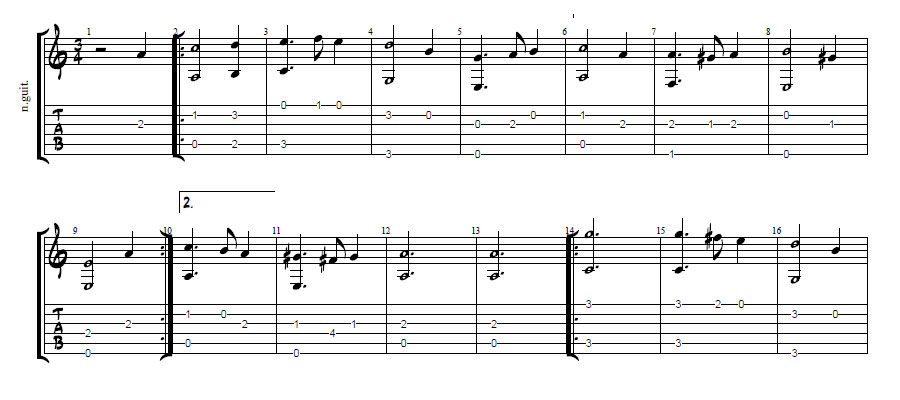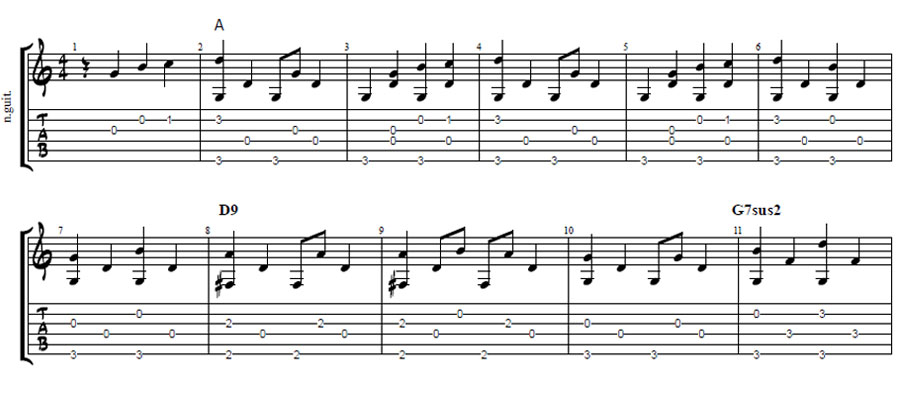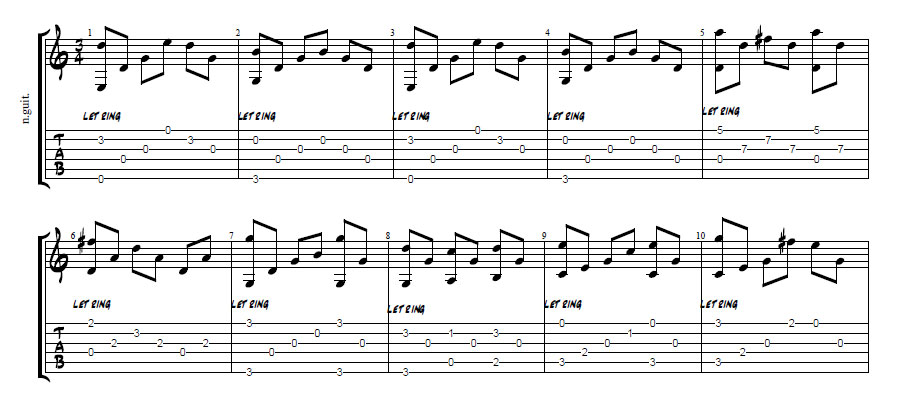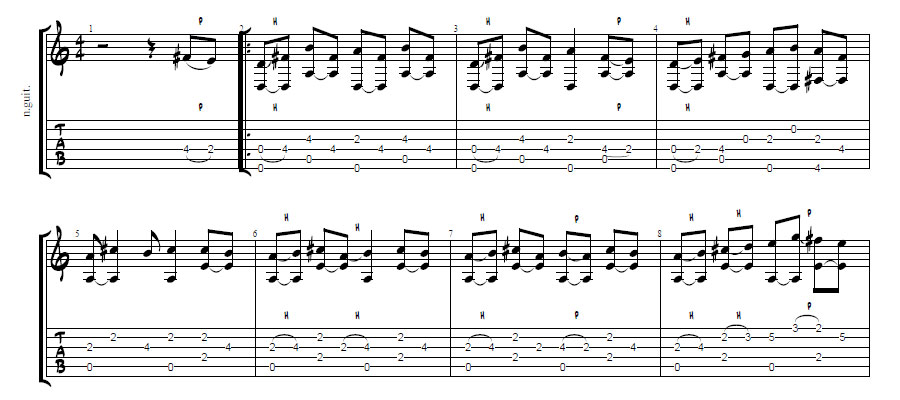Fingerstyle Guitar
A gentle introduction to fingerpicking and some easy songs to try
There are a few different genres and styles of playing when it comes to fingerstyle guitar. Sometimes it is referred to as fingerpicking or even finger playing depending on the musician's background. In this article we will show you the hodge-podge of methods and patterns for playing guitar with just your fingers.
What is fingerstyle guitar?
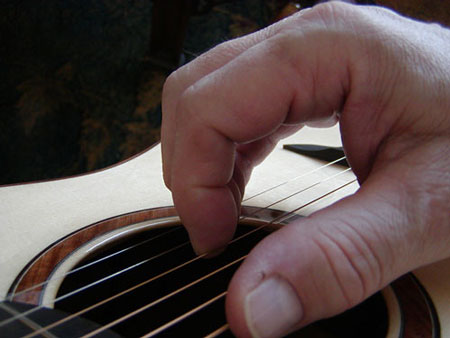
The most common ways to play a guitar are by striking it, plucking it with your fingers, and tapping. Normally we think of striking or strumming it as playing with a pick or plectrum. Most beginners start out with a pick and are used to it.
Generally, when we look into fingerstyle playing, we are dealing with just the plucking of individual fingers.
Many of the best guitarists will incorporate all three of these methods into their playing. Even if you are not looking to play classical guitar, learning some finger movements and patterns are a great idea.
Who knows when a little finger plucked flourish might fit perfectly in a song? And your solo or melody playing will benefit from better hand efficiency.
There is a good chance you already do a little fingerstyle guitar playing, whether when noodling around without a pick or even when doing bass runs with your thumb and index finger. Yes, some fingerpicking techniques are very advanced and take a lot of practice, otherwise it's all accessible to the average guitarist.
The Basics of Fingerstyle
The main reason we want to incorporate fingerstyle guitar playing is for arpeggios, melodies, and extra bass notes. Essentially instead of having one flat pick hit your strings you now have four fingers and a thumb to add more lead sound in your song.
But playing with your fingers has a different attack than a pick, the timbre is simply lighter.
While fingerstyle is not as loud or forceful as striking or picking, we have a wider range of sonic and strumming possibilities. We can hit notes on strings that are not adjacent and play different intervals. Fingerpicking can give us a simple rhythm or a complex mixture of bass, harmony, and competing grooves.
Strums and their patterns are very similar to drumbeats, bass lines, and chord progressions.
If we understand the basics, we know exactly what sound we will get out of each pattern. A great example is Travis picking being a common staple of old time, country, and folk music (more info on this later in the article).
The finger names and symbols
Since classical is the most common genre associated with fingerstyle playing it is helpful to familiarize yourself with some terminology, especially those applied to the fingers.
- Thumb: T or P
- Index: 1 or i
- Middle: 2 or m
- Ring: 3 or a
- Little: 4 or c,x,e
"Pima" symbols are named after the Spanish words Pulgar, indice, medio, and anular.
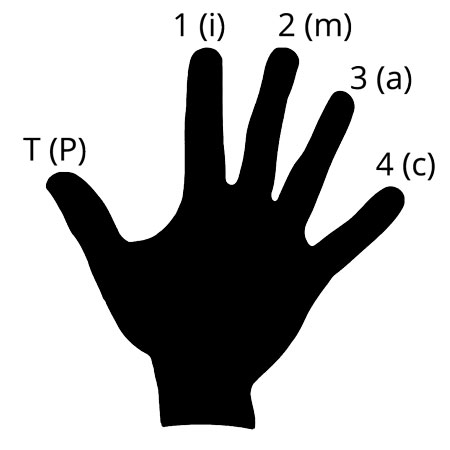
They may also be referred to with numbers or the first letter of their English counterpart when learning fingerstyle in other genres besides classical.
While there are a lot of different rules depending on the genre of music they mostly agree on thumb and finger positions.
With the thumb you strike down using just the top joint and the fingers are plucked up at a roughly 45-degree angle. The amount of time to prepare your finger for the pluck and the amount of force you give it determine the final sound.
The most common fingerstyle patterns
Now that you know the terms you can jump right into some common fingerpicking patterns.
Many are inspired by specific classical guitar techniques, but they all can be applied in other forms of music. The first few alone are the most used in folk and pop genres.
To try the patterns out, simply pluck an open string with right hand fingers as the pattern shows.
Some of these patterns will give you a back and forth feel like:
P-i-P-i or i-m-i-m, but a P-a-m-i-P-a-m-i or a-m-i-a-m-i will give you a tremolo effect.
Learn all the major patterns to get an idea of how each can fit in a song.
| P-i |
| P-i-m |
| P-i-m-a |
| P-i-m-a-m-i |
| P-a-m-i |
| P-i-m-i-a-i-m-i |
| P-i-m-a-i-m |
| i-m-i-m |
And tough patterns to strengthen your fingers like these:
| m-a-ma |
| a-m-i |
| i-m-a |
| P-a |
The pinky finger is not supposed to be used in some styles, while others it is occasionally utilized.
It's good to practice exercises to strengthen it, but not something to push. If anything, your left pinky is used more often in guitar playing.
Once you are comfortable with some of the basic patterns try mixing them together.
And definitely don't get stuck in the fact these patterns are just for classical guitar playing. Just playing four chord progressions starting with P-i, and evolving to P-i-m, and then P-i-m-a has a great pop or indie ballad vibe when played on a steel string acoustic.
Easy traditional songs to play with fingerstyles
Here below you find some nice songs that are perfect for fingerpicking. For each song, you can download the pdf guitar tabs, just click on the link below the picture.
Gran Vals (or Nokia ringtone?)
The Gran Vals was composed by Francisco Tarrega in 1902, but (sadly) became famous for being used as Nokia cellphones ringtone.
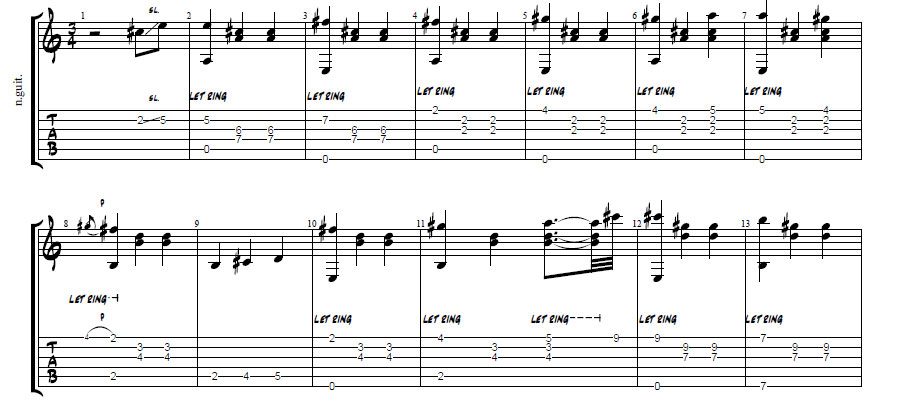
What guitars are used the most in finger style?
Most musicians and listeners will often think of classical guitar as the main fingerstyle playing, and that is a fair assessment. Nylon strings on any instrument generally make it easier to pluck than metal.
Acoustic steel strings are a lot harder to manipulate with a finger and aren't as forgiving on your hands!
Electric fingerstyle was more popular in the early jazz and swing days when a plugged-in guitar was new. Over the years the volume of instruments rising has made it so fingerstyle on an electric just isn't as popular as acoustics, unless you happen to be playing it with a slide.
Ironically it happens to be easier on an electric than a steel string acoustic, the lighter gauge certainly helps when playing the strings.
However, tapping has definitely taken over fingerstyle these days, you will see that more often with electric guitar players. But no matter what instrument you play if fingerpicking sounds good, give it a try.
Variations of Guitar Fingerstyles
Bossa Nova
Classical is where we see fingerstyle playing the most, and two genres with similar methods are flamenco and Bossa nova.
The latter influenced by Brazilian music and jazz, with the most popular tune being "The Girl from Ipanema".
Travis Picking
We've already mentioned Travis picking which was named after the famous country singer Merle Travis.
In this style we use our thumb and index to hit two strings at the same time. This can create a great double stop interval which then is followed by melody playing with the index and middle. This is played over and over giving it that country/folk groove.
Clawhammer style
Clawhammer is usually a banjo fingerpicking/striking style, but it is also used on a guitar that is tuned to open G.
In this style we often don't use the thumb on the downbeat. Your fingers form a claw like grip, and they start it off by brushing the strings before the thumb hits on a downstroke.
This makes the common bum-ditty pattern of Appalachian music.
Other instruments with open tunings like slide and steel guitars are often used with their own fingerpicking styles.
When playing slide blues guitar this allows you to slur your notes and also pick out individual melodies, you can get the best of both worlds.
Hawaiian slack key has a similar open G tuning as clawhammer, but a totally different overall feeling to the music.
Carter Family picking
Carter Family picking was made popular by the famous musical Carter family (June married Johnny Cash!). It involves using the bass strings for melody while strumming the treble strings for rhythm.
The term picking is used because it has been adapted for picks and fingerstyle.
It's a very simple but popular style among fans, which was also later adapted for the mandolin by Bill Monroe.
Ragtime
Ragtime picking in early jazz was also based on banjo playing as that was the American instrument long before the guitar popped up. Like other country and folk inspired fingerpicking, we use the thumb, index, and middle finger and our goal is to copy a syncopated rhythm.
Because most country, folk, ragtime, and early jazz are all about dancing. Finger playing provides that syncopation by one skilled player.
Rasgueado Flamenco
And speaking of skill, rasgueado are a variety of amazing flamenco fingerpicking techniques that will take a lot of practice. It has to be a very precise and quick movement of the fingers. As you strum down you hit all four fingers on the outside nail and then pluck up with the thumb.
It doesn't just take practice to get the technique, you also need to be tough as your fingernails can break!
(Most common rasgueado or main flamenco strum exercise)
How to Practice
When we play in a fingerstyle method, we are still using chord progressions just like strumming.
The best way to start learning fingerpicking is just play the same progressions and songs you are comfortable with and just use rock, folk, or pima type patterns.
Pretend you live in a 90's MTV unplugged world!
